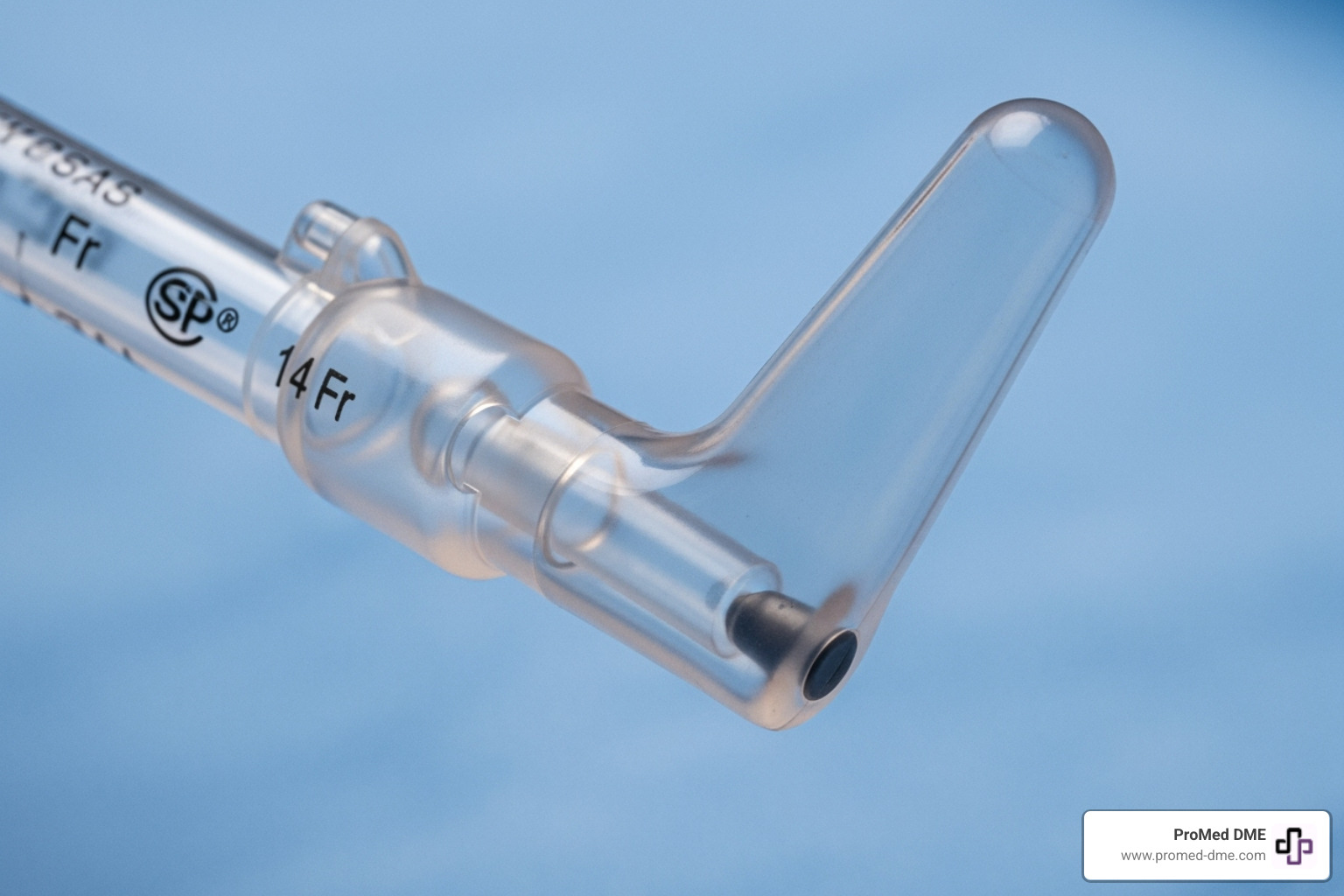A Gentleman's Guide: Inserting a Urinary Catheter with Confidence

How to insert urinary catheter male is a common question among those dealing with urinary tract concerns. Whether you're recovering from a surgery, managing nerve damage, or just needing assistance with your bladder control, knowing the right way to handle self-catheterization can be a game changer. Here’s a quick overview for those who want a straight-to-the-point answer:
- Gather your supplies, including a new catheter and water-based lubricant.
- Wash your hands thoroughly.
- Clean the penis with soap and water.
- Apply lubricant to the catheter's tip.
- Gently insert the catheter into the urethra until urine begins to flow.
- Once urine stops, slowly remove the catheter.
- Clean up and wash your hands again.
The idea of self-catheterizing might seem daunting at first, but with the right approach and a bit of practice, many find it straightforward. Self-catheterization helps in maintaining independence, especially for those dealing with conditions that affect bladder function, such as nerve damage. Understanding the steps and having confidence in the process can transform an essential task into a manageable routine.

Important how to insert urinary catheter male terms:- female intermittent catheters- urinary catheter
Understanding Urinary Catheters
When it comes to urinary catheters, there are several types to consider. Each serves a unique purpose, and understanding the differences can help you make the best choice for your needs. Let's break down the main types: intermittent catheters and indwelling catheters.
Intermittent Catheters
Intermittent catheters are designed for temporary use. You insert them several times a day to drain your bladder and then remove them. This type is often pre-lubricated, making insertion more comfortable. Because they are not left inside the body, the risk of infection is lower compared to other types.
The process of using an intermittent catheter is something you can learn to do on your own. With the right guidance, you can gain independence in managing your bladder health.
Indwelling Catheters
Indwelling catheters, also known as Foley catheters, are used for continuous drainage. They are inserted into the bladder and left in place. A small balloon filled with water keeps the catheter from slipping out. Urine drains through a tube into a collection bag, which can be attached to your leg or a stand.
It's important to change indwelling catheters at least every 3 months to reduce the risk of infections. While indwelling catheters offer prolonged relief, they require careful monitoring and maintenance.

Suprapubic and Condom Catheters
In some cases, the usual route through the urethra isn’t an option. Suprapubic catheters are inserted directly into the bladder through the abdomen. They are typically used when the urethra is damaged or blocked.
Condom catheters offer a less invasive solution for those managing incontinence. They fit over the penis like a condom and drain urine into a bag. This option is great for avoiding internal catheterization.
Choosing the right urinary catheter can significantly impact your quality of life. At ProMed DME, we are committed to helping you find the best solution for your unique needs.
Understanding these catheter types is the first step in managing your urinary health effectively. Always consult with a healthcare provider to ensure you're using the right catheter for your condition.
Next, we'll dive into the how to insert urinary catheter male process, including essential tips for preparation and execution.
How to Insert a Urinary Catheter Male
Inserting a urinary catheter might seem challenging, but with the right approach, you can do it with confidence. Let's walk through the preparation and insertion process step by step.
Preparing for Insertion
Before you begin, gather all necessary supplies. This ensures a smooth process without interruptions. You'll need:
- A catheter (intermittent or indwelling)
- Sterile gloves
- Lubricating jelly (water-based, like K-Y Jelly)
- Antiseptic wipes or soap and water
- A collection bag (if needed)
- A clean towel or absorbent pad
Hand hygiene is crucial. Wash your hands thoroughly with soap and water to prevent infections. If you're assisting someone else, wear sterile gloves to maintain a sterile environment.
Next, clean the area around the urethra. Use antiseptic wipes or soap and water to clean the penis, ensuring that any bacteria are removed. If uncircumcised, retract the foreskin to clean underneath.
Step-by-Step Insertion Process
Positioning is key for comfort and ease of insertion. The patient should lie on their back with legs extended and slightly apart. This position provides the best access to the urethra.
Now, let's move on to the gentle insertion process:
Lubricate the Catheter: Apply a generous amount of water-based lubricant to the first few inches of the catheter. This reduces friction and makes insertion smoother.
Begin Insertion: Hold the penis at a right angle to the body. Gently insert the lubricated catheter into the urethra. If you encounter resistance, pause, and encourage the patient to take deep breaths to relax.
Advance the Catheter: Continue to insert the catheter until urine begins to flow. For males, this is typically 17 to 22.5 cm (7 to 9 inches). Once urine flows, advance the catheter a bit more to ensure it's fully in the bladder.
Observe Urine Flow: Allow the urine to drain completely into the collection bag. This ensures the bladder is fully emptied.
Secure the Catheter: If using an indwelling catheter, inflate the balloon with the prefilled syringe to keep it in place. Attach the collection bag securely to the leg or a stand.
By following these steps, you'll ensure a safe and effective catheter insertion. Practice makes perfect, and over time, you'll become more comfortable with the process. If you experience any issues, consult with a healthcare professional for guidance.
In the next section, we'll explore tips for a comfortable catheterization experience, including managing discomfort and the benefits of using anesthetic gel.
Tips for a Comfortable Experience
Inserting a urinary catheter can be daunting, but with a few tips, you can make the process much more comfortable. Let's explore some key strategies.
Use Anaesthetic Gel
Anaesthetic gel can be your best friend during catheter insertion. It helps numb the urethral area, reducing any discomfort you might feel. Apply a small amount to the catheter, and also directly to the urethra if needed. This gel not only eases the insertion process but also minimizes irritation.
Manage Discomfort
Discomfort is a common concern, but there are ways to manage it effectively:
Go Slow: Take your time during insertion. Rushing can increase discomfort and lead to errors.
Deep Breaths: Encourage deep breathing to relax your muscles. This can help reduce resistance in the urethra, making the catheter glide in more smoothly.
Adjust Positioning: If you feel any pain, adjust your position slightly. Sometimes a small change can make a big difference.
Practice Makes Perfect
Like any skill, inserting a catheter gets easier with practice. Here are some tips to improve your technique:
Start in a Calm Environment: Find a quiet space where you won’t be disturbed. This allows you to focus solely on the task at hand.
Review the Steps: Before you begin, mentally walk through each step of the process. This helps build confidence and ensures you don’t miss anything important.
Seek Guidance: If you're new to self-catheterization, consider asking a healthcare professional to guide you through the first few times. Their expertise can be invaluable.
By following these tips, you'll find that catheter insertion becomes less intimidating and more routine. Discomfort can be managed, and with time, you'll become more adept at self-catheterization.
In the next section, we'll tackle some frequently asked questions about urinary catheter insertion, addressing common concerns like pain levels and self-catheterization techniques.
Frequently Asked Questions about Urinary Catheter Insertion
How painful is a catheter insertion for a male?
Catheter insertion might sound uncomfortable, but it doesn't have to be painful. Many men find that using an anaesthetic gel significantly reduces discomfort. This gel numbs the urethral area, making the process smoother. While some discomfort is normal, especially the first few times, it shouldn't be painful. If you experience sharp pain, stop and consult a healthcare professional.
Can you insert a male catheter yourself?
Absolutely! Self-catheterization is a common practice for many men who need to manage urine drainage regularly. It might seem intimidating at first, but with practice, it becomes a routine task. Ensure you have all the necessary supplies, such as a catheter, lubricant, and a clean area to perform the procedure. Follow the step-by-step process, and soon you'll be doing it with confidence.
What is the correct technique for the insertion of a urinary catheter?
The correct technique involves several key steps to ensure safety and comfort:
Lubrication: Apply a generous amount of water-based lubricant to the catheter. This reduces friction and makes insertion smoother.
Catheter Advancement: Gently insert the catheter into the urethra. It's crucial to go slow and steady. Once you see urine flowing, advance the catheter another inch to ensure it's fully in the bladder.
Bladder Entry: Once urine starts to flow, hold the catheter in place until the bladder is empty. Afterward, carefully remove the catheter, watching for any residual urine.
By following these steps, you'll ensure a safe and effective catheterization process. Practice makes perfect, and don't hesitate to seek guidance if needed.
In the next section, we'll dig into more about the various types of catheters and their specific uses to help you make the best choice for your needs.
Conclusion
At ProMed DME, we understand the importance of having access to top-quality products and exceptional customer service when managing your health. Our commitment is to provide you with the best medical supplies, including a wide range of urology products, to ensure your catheterization experience is as smooth and comfortable as possible.
With our dedicated nurse available to answer any questions and offer personalized advice, you're never alone in this journey. We also work with most insurance plans to minimize your out-of-pocket expenses, making it easier for you to receive the supplies you need without financial stress.
Our free shipping and discreet packaging ensure that you receive your products conveniently and privately. Whether you're just starting out with self-catheterization or looking for reliable supplies, ProMed DME is here to support you every step of the way.
Explore our Urology products and find how we can help you live a confident and fulfilling life. With ProMed DME, you're not just getting products; you're gaining a partner dedicated to your well-being.
Related Resources & Articles
Stay informed with our informative blog posts.
Discover the ProMed Advantage
& Try Our Products
We offer free shipping and legendary customer service to ensure you receive the
best DME products for your needs.



